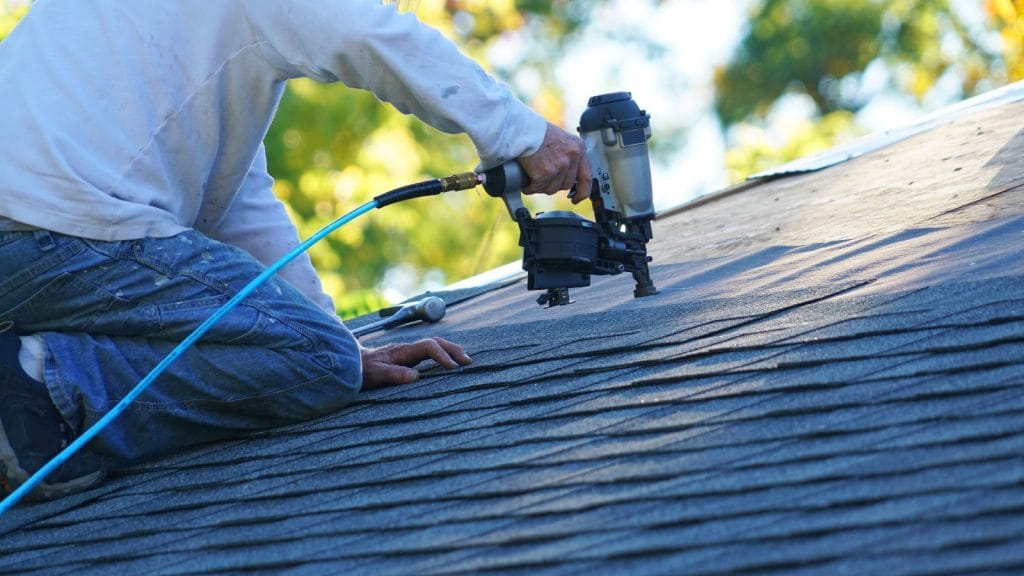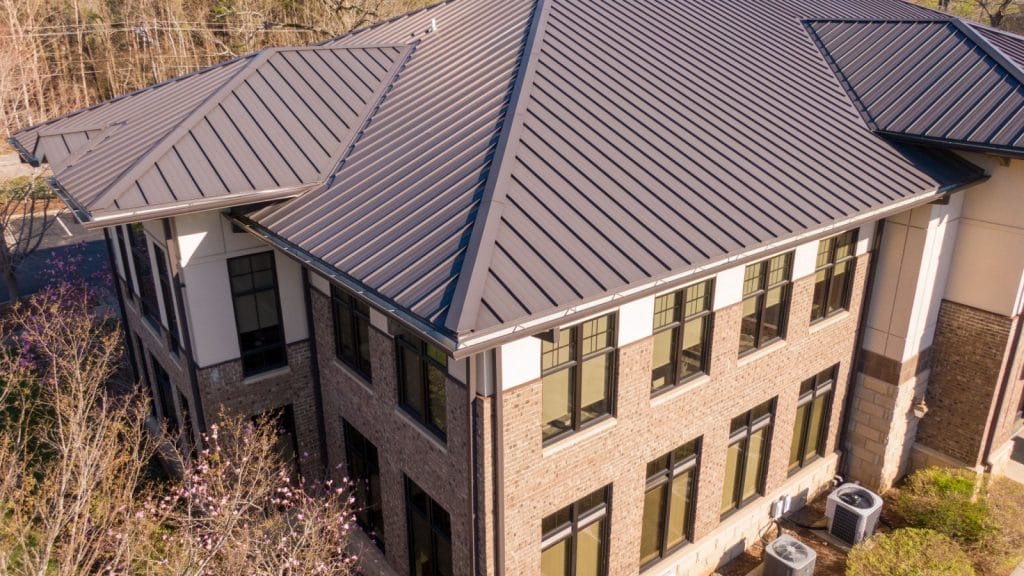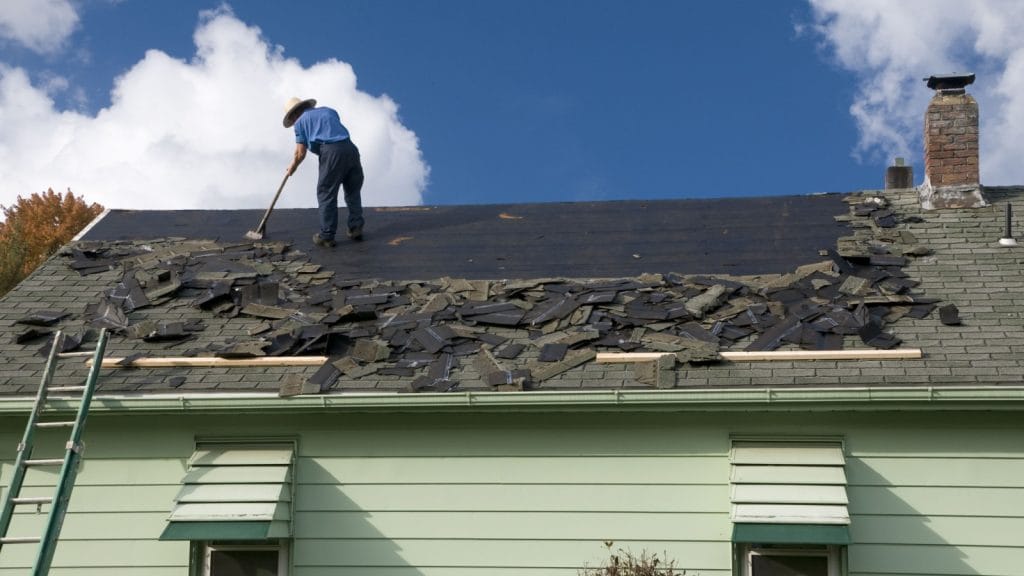Essential Roof Maintenance Tips to Prevent Costly Repairs

Tasks To Maintain Your Roof That Every Atlanta Homeowner Should Know
Every Atlanta homeowner should have a few reliable roof maintenance tips at their disposal. Whether you live in an older bungalow in Grant Park or a newer build in Alpharetta, your roof is one of your home’s most important lines of defense. It takes a beating all year—from spring thunderstorms and summer heat to winter moisture—and if you ignore minor issues, they can quickly spiral into expensive problems.
In this post, we’ll walk through the most essential roof maintenance tips to help you avoid costly repairs, extend the life of your roof, and keep your home protected in every season.
Why Regular Roof Maintenance Matters in Atlanta
Atlanta’s climate is hard on roofing systems. With hot, humid summers, stormy springs, and the occasional winter freeze, your roof is constantly expanding, contracting, and shedding water. That ongoing stress takes a toll. Over time, even the best roofing materials can develop cracks, loose flashing, or tiny leaks that go unnoticed—until they cause bigger issues.
Without regular upkeep, minor problems can quickly turn into full-blown water damage, wood rot, or mold growth. But the good news is that most of these issues are completely preventable. A little seasonal attention can add years to your roof’s life, improve energy efficiency, and help you avoid emergency repairs down the line. Staying on top of roof maintenance isn’t just about preventing leaks—it’s about protecting your investment, maintaining curb appeal, and keeping your home safe and dry year-round.
Inspect Your Roof Twice a Year
One of the most effective roof maintenance tips is also the simplest: perform a visual inspection at least twice a year—ideally in the spring and fall.
From the ground, use binoculars to check for:
- Missing, cracked, or curling shingles
- Sagging areas or uneven lines
- Flashing that’s pulling away from chimneys, skylights, or vents
- Dark spots or moss that could signal trapped moisture
Inside your attic, look for water stains, soft spots, or signs of mildew. These can indicate slow leaks that haven’t yet reached your ceiling. If something doesn’t look right and you’re unsure, consider calling a professional for a closer inspection.
Keep Gutters Clean and Clear
Gutters and downspouts play a massive role in roof health. When they’re clogged with leaves or debris, water backs up under your shingles or pools around the foundation. That can lead to rot, mold, and even structural damage.
Clean your gutters at least twice a year—or more often if you live under large trees. Ensure that downspouts are positioned to carry water at least several feet away from your home. And if your gutters are old or pulling away from the roofline, consider replacing them before the next big storm.
Keeping your drainage system in good shape is one of the most underrated but essential roof maintenance tips out there—especially in a rainy region like Atlanta.
Address Minor Repairs Promptly
If you notice a missing shingle, a popped nail, or a loose piece of flashing, don’t put it off. Even small vulnerabilities can allow water to enter, which quickly damages the insulation and decking below the surface.
Hiring a contractor to fix these issues early can save you thousands compared to waiting for a leak to spread. Think of roof repairs like dental work: it’s always cheaper to fix a small cavity than to wait for a root canal.
Also, keep in mind that many roofing warranties require proof of ongoing maintenance. Failing to address damage could void your coverage.
Trim Overhanging Branches
In Atlanta’s leafy neighborhoods, overhanging limbs are a common hazard. Branches that rub against your shingles in the wind can strip away protective granules, and falling limbs can cause significant damage during storms.
Trim back any limbs that are too close to your roof—ideally at least 6–10 feet away. This also helps minimize leaves in your gutters and discourages animals from climbing onto your roof.
It’s a simple task with significant benefits and should be part of any seasonal roof maintenance routine.
Keep an Eye on Ventilation and Attic Conditions
Your roof isn’t just what you see from the outside—what’s happening in your attic plays a significant role in its lifespan.
Proper ventilation allows hot, moist air to escape, which helps regulate your home’s temperature and prevents condensation from forming under the roof deck. Without it, your shingles can age prematurely, and moisture can create a breeding ground for mold.
Ensure that soffit vents and ridge vents are clear and functioning correctly. If your attic feels overly warm or stuffy, or you notice mildew on insulation, have a professional assess your ventilation system.
This is one of the more technical roof maintenance tips, but it’s critical for long-term performance.
Watch for Signs of Storm Damage
After a significant storm—especially one with hail or high winds—it’s smart to inspect your roof for damage, even if you don’t notice any leaks right away.
Look for:
- Shingles knocked loose or stripped of granules
- Dented flashing or gutters
- Debris sitting on the roof (like branches or leaves)
Hail damage, in particular, isn’t always easy to spot from the ground. If you suspect a storm hit your neighborhood hard, schedule a professional inspection. Catching damage early can help you file a timely insurance claim and prevent more extensive repairs later.
Don’t Skip Professional Roof Inspections
Even if your roof looks fine from the ground, it’s still smart to schedule a professional inspection every few years. Roofing pros are trained to catch the things most homeowners miss—like soft spots, subtle sagging, hidden hail damage, or barely visible nail pops that could lead to leaks down the road.
This is especially important if your roof is over 10 years old or if you’ve recently purchased your home and aren’t sure when it was last checked. A certified Atlanta roofing contractor can give you a thorough assessment, flag any early warning signs, and recommend the right next steps.
In many cases, early detection means simple, affordable fixes instead of major repairs. Plus, an inspection offers peace of mind—knowing your home is protected before storm season or another hot summer sets in.
Consider Seasonal Preventive Maintenance
Some of the best roof maintenance tips involve being proactive in anticipation of seasonal weather changes. In the fall, ensure your gutters and valleys are clear of leaves. Before summer, check that your attic ventilation is working efficiently to handle the heat in Georgia.
If winter’s on the way, ensure flashing is secure and that your insulation is adequate to prevent ice damming in the rare event of a freeze. And in the spring, after those intense storms have rolled through, recheck for wind or water damage.
Being proactive each season takes less time and money than waiting until something breaks.
The Bottom Line: A Little Maintenance Prevents Big Repairs
Caring for your roof doesn’t have to be complicated—but it does have to be consistent. By following these roof maintenance tips throughout the year, you can prevent costly damage, avoid emergency repairs, and keep your home protected through all of Atlanta’s wild weather.
From keeping your gutters clean to scheduling a professional inspection, each small step adds up to significant savings and long-term peace of mind.
And if you ever spot signs of damage or just aren’t sure what to look for, don’t wait. Reach out to a local expert, such as Bumble Roofing of North Atlanta, for help. Their team offers professional roof inspections, seasonal maintenance plans, and fast, reliable repairs tailored to Atlanta homes.
Ready to protect your home and your wallet? Start with these essential roof maintenance tips—and if you need support, Bumble Roofing of North Atlanta is just a call away. Contact us today!
Roofing, the Easy Way
Get Estimate





